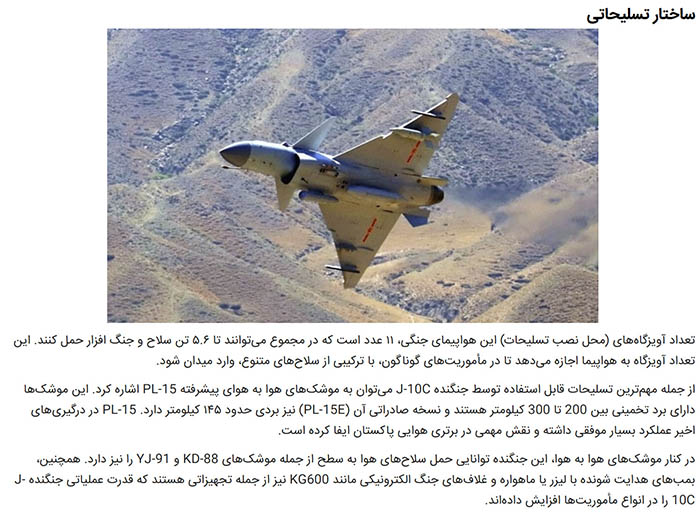Assessing the Possibility of Iran Acquiring the Chengdu J-10C Fighter Jet
2. The Chinese J-10C: Capabilities and Significance
Development and Design
The J-10 series originated from China’s efforts to develop a fifth-generation fighter-like aircraft, with the J-10C representing the culmination of those efforts. It features:
- Design: A delta wing with canards, optimized for agility and maneuverability.
- Engines: Powered by the indigenous WS-10 engine, offering high thrust-to-weight ratio.
- Avionics: Equipped with AESA radar, modern electronic warfare systems, and helmet-mounted sights.
- Weapons: Capable of carrying a wide array of air-to-air and air-to-ground missiles, including the PL-15 long-range missile.
Performance
- Speed: Mach 1.8 (~2,222 km/h).
- Range: Combat range of approximately 550 km; extended to over 4,600 km with external tanks.
- Maneuverability: Comparable to Western 4.5-generation fighters like the F-16V or Rafale.
- Sensors: AESA radar with high target detection and tracking capabilities.
- Weapons: Multiple pylons for diverse payloads, including advanced beyond-visual-range missiles.
Strategic Significance
The J-10C’s technological sophistication makes it an attractive option for countries seeking a capable multirole platform without acquiring more expensive fifth-generation fighters like the F-35 or F-22. For China, exporting the J-10C to allies or partners like Pakistan and potentially Iran represents a strategic move to expand influence and strengthen regional alliances.
June 27, 2025 | 6:04 pm




